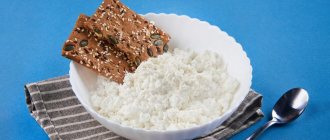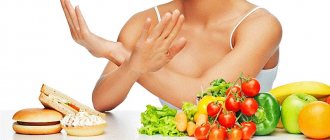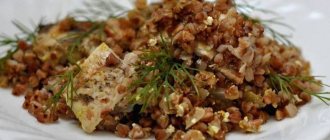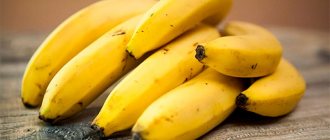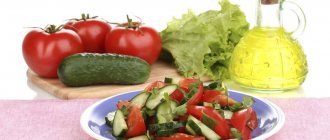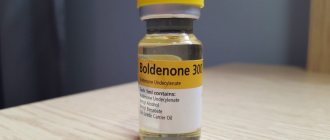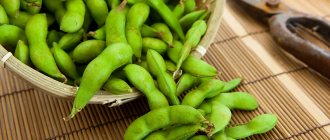Potassium: what you need to know about it
There is no substitute for this alkaline nutrient. With a lack of microelement, the functions of the heart, kidneys, brain, and muscle tissue are disrupted. Potassium controls water and electrolyte balance, regulates osmotic pressure in cells. In conjunction with sodium and magnesium, the nutrient normalizes the pH in liquid media.
The nutrient is found in large quantities in plant foods. Sources of potassium for the body are vegetables, fruits and berries. Convenience foods, fast food and other unsustainable foods create an alkaline nutrient deficiency.
The body stores approximately 250 g of the mineral. The blood takes 3 g of the substance, the rest is distributed among the cells. To replenish reserves, the body should receive 3-5 g of potassium daily with food.
With physical activity, hard work, and sports training, the need for potassium increases. The stronger the physical activity, the more foods containing potassium need to be included in the diet. An increased amount of the mineral is needed when using diuretics, excessive sweating and pregnancy.
Beneficial properties of potassium
Thanks to potassium, all organs and systems in the human body work harmoniously. The mineral performs a number of functions:
- Normalizes blood pressure. The nutrient restores elasticity to blood vessels and prevents cholesterol plaques from attaching to their walls. Unimpeded blood circulation allows blood pressure to remain normal. At the initial stage of hypertension, doctors recommend that patients eat foods rich in potassium.
- Improves kidney function. The microelement, by lowering blood acidity, reduces the risk of kidney stones. Patients with renal failure are contraindicated from eating foods enriched with alkaline nutrients. They are more likely to develop hyperkalemia.
- Eliminates excess fluid. The microelement normalizes water balance and regulates body weight.
- Increases metabolic rate. With a lack of potassium in the body, metabolic processes slow down. Fats stop being broken down and are deposited in the subcutaneous tissue.
- Protects from stress. Products containing chlorine, sodium and potassium improve the functioning of nerve roots and muscle cells. Thanks to them, the transmission of nerve impulses is improved. Brain centers provide an adequate response to stimuli. The person experiences nervousness, anxiety, and insomnia.
- Eliminates muscle spasms. When there is a lack of nutrients, spasms and cramps occur. Even minimal potassium deficiency causes muscle pain.
- Strengthens bone tissue. The nutrient prevents the development of osteoporosis, pathologies of the joints and spine.
- Stimulates brain function. The mineral provides oxygen to brain cells. With its deficiency, hypoxia develops, accompanied by a decrease in intellectual abilities, memory loss, and absent-mindedness.
- Converts sugars into energy. When there is a nutrient deficiency, glucose stops breaking down and energy is produced. With a low concentration of potassium, a person quickly gets tired and loses performance.
Honey is an ideal supplier of nutrients and energy. Medical studies confirm that honey contains potassium, as well as sodium, phosphorus, magnesium, chlorine - minerals that enhance the beneficial effects of K.
Table No. 1
| Mineral | Amount, mg |
| Potassium | 36 |
| Chlorine | 19 |
| Phosphorus | 18 |
| Sodium | 10 |
| Magnesium | 3 |
What leads to potassium deficiency
Microelement deficiency occurs:
- If a person takes diuretics without meeting potassium needs.
- When the potassium content in basic foods is reduced and sodium is increased (the amount of salt and additives that include this mineral is high).
- When introducing a large amount of food without potassium into the diet (fast food).
- Excessive physical activity, excessive physical activity.
- Smoking and alcohol (even if the person has little commitment to bad habits).
- Drug use (in small, especially in increased doses).
Symptoms of potassium deficiency
It is difficult to determine nutrient deficiency without laboratory tests. The symptoms of many diseases and mineral deficiency are the same. If a person eats mainly foods that are depleted or do not contain potassium, he or she experiences:
- heart pathologies;
- lethargy;
- drowsiness (even after a good rest);
- loss of appetite;
- muscle weakness;
- joint diseases.
If you follow a debilitating diet and do not introduce foods rich in K into your diet, severe pathologies can develop in the body.
When choosing vitamins, pay attention to the composition of the preparations. The positive effect of potassium on organs and systems is enhanced in the presence of Na, Cl, Mg and P.
Balance of potassium and magnesium
Magnesium is essential for heart and blood vessel health. But it is not able to perform its functions without potassium. In tandem, these nutrients restore metabolism in the myocardium and improve heart function.
By consuming foods with potassium and magnesium, a person prevents the occurrence of dangerous pathologies. If you increase the proportion of food containing these nutrients in your diet, the likelihood of developing atherosclerosis and heart pathologies will decrease.
Doctors recommend that patients who have had a heart attack or stroke:
- eat foods high in potassium;
- Use foods from the list that can quickly increase your nutrient levels.
Nutritionists emphasize that if you eat an increased amount of fresh vegetables and fruits, greens, this improves brain function. Thanks to them, memory increases and concentration increases.
Foods containing potassium and magnesium
The daily need for magnesium and potassium is affected by weight, physical activity, physical activity, and health status. If a person is engaged in heavy physical labor, then the list includes foods that contain the maximum amount of minerals (nuts, seaweed, oatmeal, buckwheat, peas, greens).
Plant foods contain increased amounts of alkaline nutrients. Cereals, sorrel, spinach, parsley, beets, carrots, and raspberries are rich in minerals.
The highest concentrations of potassium and magnesium are found in peanuts, hazelnuts, seaweed and beans. Also, the highest mineral content is found in rolled oats, walnuts, and beans. High concentrations of nutrients were found in potatoes, rice, tomatoes, and green onions.
Among fruits, bananas, black currants, watermelons, and cherries have the highest content of potassium and magnesium. Minerals are found in eggs, dairy products, mushrooms, and honey.
Diet for pregnant women
While a woman is expecting a child, she needs to take care of her health more than ever. After all, the health of the child will depend on the state of her health.
In general, doctors do not recommend any kind of diet during pregnancy. But there are exceptions to the rules.
You can follow a potassium diet during pregnancy. It will be absolutely harmless for both mother and child.
In addition, it has a number of useful properties. A potassium diet will help remove large amounts of toxins from the body and cleanse the body.
Proper nutrition will provide the woman in labor with all the necessary vitamins and minerals that will be beneficial to the fetus in the womb.
You should know that this diet has its limitations. A woman can observe it no more than after 1 week, because it is important not to cause any harm to the child.
Balance of potassium and sodium
The functions of potassium are related to the activities of sodium in the body. These nutrients work in concert. For effective interaction between minerals, you need to consume foods that contain potassium and sodium in optimal proportions of 3:1.
If a person eats foods rich in sodium, he should not add foods rich in potassium to his diet. This will maintain a balance between nutrients and prevent the development of diseases caused by an overabundance of one and a lack of another substance. High concentrations of potassium and sodium are found in seaweed, beans, potatoes, raisins, and seafood.
When a person consumes tomato juice with added salt, the value of the product decreases. Although the drink contains a lot of potassium, if there is an excess of salt, the body uses it irrationally.
Table No. 3 Products containing sodium and potassium
| № | Products | Amount of sodium, mg | Amount of potassium, mg |
| 1 | Sea kale | 510 | 960 |
| 2 | Beans | 401 | 259 |
| 3 | Potato | 31 | 629 |
| 4 | Hercules | 62 | 363 |
| 5 | Raisin | 99 | 820 |
| 6 | Shrimps | 149 | 221 |
| 7 | Mussels | 119 | 249 |
Nutrients are necessary for the body to function properly. It is necessary to maintain the daily amount of minerals at the proper level. It is impossible to independently determine the amount of potassium, magnesium and sodium. Only a doctor can adjust your diet and prescribe vitamin complexes.
Sample menu for several days
Depending on the duration of diet No. 10, the entire diet is divided into 4 stages: the first two consist of 1-2 days, the third and fourth - 3-4 days each.
On Internet resources you can find clearly defined diets for this diet and choose the one you like best. You can choose, for example, this (items need to be tied to certain hours of the day and adhere to the regime).
Any day of the first stage.
This is the lightest period in terms of calorie content and complexity of dishes.
- 1-2 potatoes baked in foil, herbal tea with low-fat milk.
- Half a glass of freshly squeezed fruit juice, you can even add water to taste.
- Vegetable puree soup, allowed fruit of choice.
- A plate of mashed potatoes, dried fruit compote without added sugar.
- Rosehip infusion.
- Half a glass of vegetable juice.
Any day of the second stage.
It adds some variety to the diet. It is easier to carry over than the first stage.
- Two potatoes, baked with skins, weak black tea with low-fat milk.
- A bowl of wheat or buckwheat porridge, a glass of fruit juice (not store-bought, but freshly squeezed!), diluted with water.
- Potato soup and a small amount of other vegetables, one baked potato with skin, baked apple or agar-agar jelly.
- Dried fruits compote.
- Fruit pilaf with raisins, half a glass of rosehip tea.
- A glass of vegetable juice.
Any day of the third stage.
Meals these days are already close to the usual menu, but remain low in calories and easy to digest.
- A plate of millet porridge with low-fat milk and half and half water, a few soaked dried fruits.
- Mashed potatoes, a glass of freshly squeezed juice.
- Vegetable soup with added cereals, vegetable cutlet, dried fruit compote.
- Half a glass of rosehip broth.
- Mashed potatoes, steamed fish cutlet or meatballs.
- Juice from vegetables or fruits.
Any day of the fourth stage.
This is the final period, an almost complete healthy menu. Following a diet at this stage is not at all difficult.
- A plate of buckwheat porridge cooked in water with milk, vegetable salad, black tea.
- A few pieces of soaked dried apricots and prunes, a glass of freshly squeezed vegetable juice.
- Vegetable soup, rice, lean meat, compote.
- Baked apples.
- Potatoes, lean meat or lean piece of chicken, compote of dried apricots, prunes and raisins.
- A glass of vegetable juice.
